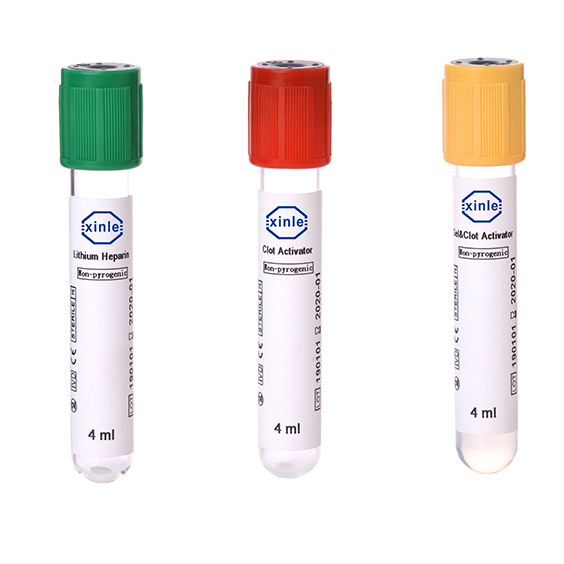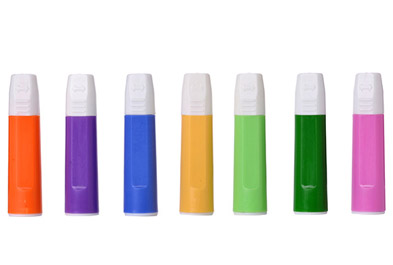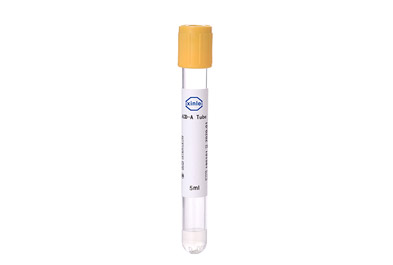1. Common serum tube red headcover, Blood Collection Vacutainer contains no additives, used for routine serum biochemistry, blood bank, and serological tests.
2. Rapid serum tube orange-red headcover, there is a coagulant in the blood collection tube, which can activate fibrin to make soluble fibrin into insoluble fibrin polymer, and form a stable fibrin clot.
The fast serum tube can coagulate the collected blood within 5 minutes and is suitable for emergency serum serialization test.
3. The inert separation gel promotes the golden head of the coagulation tube, and the inert blood separation gel and the coagulant are added to the blood collection tube. After centrifugation, the inert separation gel can completely separate the liquid components (serum or plasma) and solid components (red blood cells, white blood cells, platelets, fibrin, etc.) in the blood and completely accumulate in the center of the test tube to form a barrier. The specimen is within 48 hours. keep it steady.
The coagulant can quickly activate the blood coagulation mechanism, accelerate the blood coagulation process, and is suitable for emergency serum biochemical tests.
4. Heparin anticoagulant tube green cap, heparin is added to the Blood Collection Tube. Heparin directly acts as antithrombin to prolong the clotting time of the specimen.
Applicable to erythrocyte fragility test, blood gas analysis, hematocrit test, erythrocyte sedimentation rate and Principal biochemical test, not suitable for blood coagulation test.
Excess heparin causes aggregation of white blood cells and cannot be used for white blood cell counts. Because it can make the bloodstains have a light blue background, it is not suitable for white blood cell classification.

5. The light green cap of the plasma separation tube and the lithium heparin anticoagulant in the inert separation hose can achieve the purpose of rapid plasma separation. It is the best choice for electrolyte detection, and can also be used for routine plasma biochemical determination and emergency plasma such as ICU. Biochemical testing. Plasma specimens can be placed directly on the machine and kept stable for up to 48 hours in a refrigerated state.
6. EDTA anticoagulation tube purple headcover, ethylenediaminetetraacetic acid (EDTA, molecular weight 292) and its salt is an amino polycarboxylic acid, which can effectively chelate calcium ions in blood samples, chelated calcium or react calcium The site is removed to block and terminate the endogenous or exogenous coagulation process, thereby preventing blood specimens from solidifying.
Applicable to general hematology test, not applicable to blood coagulation test and platelet function test, nor to the determination of calcium ion, potassium ion, sodium ion, iron ion, alkaline phosphatase, creatine kinase and leucine aminopeptidase And PCR test.
7. Sodium citrate coagulation test tube light blue headcover, sodium citrate mainly acts anti-coagulation by chelation with calcium ions in blood samples.
8. Sodium citrate erythrocyte sedimentation test tube black cap, the sodium citrate concentration required by the erythrocyte sedimentation test is 3.2% (equivalent to 0.109mol/L) and the ratio of anticoagulant to blood is 1:4.

Pulished on Jun. 24, 2020

Pulished on Jun. 16, 2020